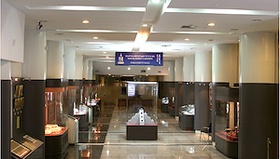Coins of Mongol khaans
Use of commercial standard instruments or coin currency in the nomadic
past has been anticipated from ancient time. In the second half of the
thirteenth century, Mongolia became a world-renowned Great empire with
characteristics of the federal state consisting of five major parts. The
economic, social and cultural activities in the dynasty were mutually flexible
and a non-discriminatory towards the geographical location of empire and it
became the ground for the long existence of the Mongol Empire. The main trading
tool throughout the empire was the coin mostly made through casting gold,
silver, copper, bronze. According to the tradition of using coins in the Middle
East and Arab, Mongolians created the coins and used on them the name and title
of the kings who were ruling at that time. From the coins of the Mongol Empire,
it is possible to find and know the valuable evidence in the historical studies
from symbolic stamps of tribes, to names, titles of kings, chronicles, and the
names of the places. Also, the Mongolian kings’ coins have multiple language
scripts, including the Mongolian and Chinese, Arabic, Persian, Turk, Chinese,
Russian, Georgian and Latvian. Thus, they contain great heritage of scripts of
different countries of the world. Some 255 coins associated with the Mongol
Empire, which are kept in the treasury of the Mongolian State Historical
Museum, were registered in the list of unique Mongolian historical and cultural
treasures by the Resolution No. 103 of the Government of Mongolia dated on
April 28, 2010

 Eng
Eng  Монгол
Монгол